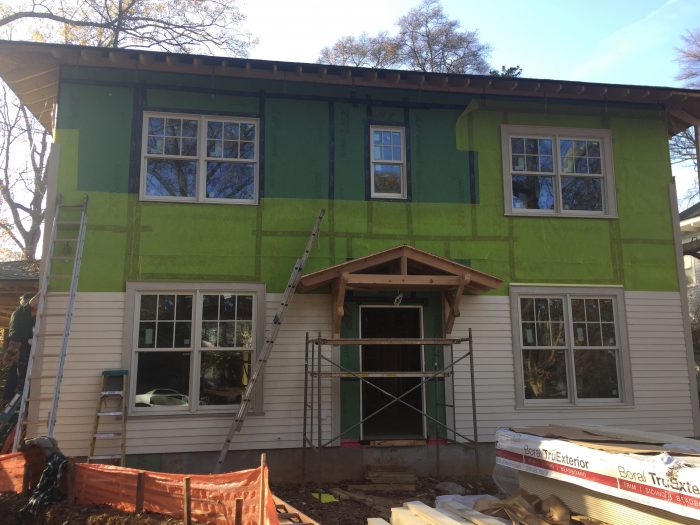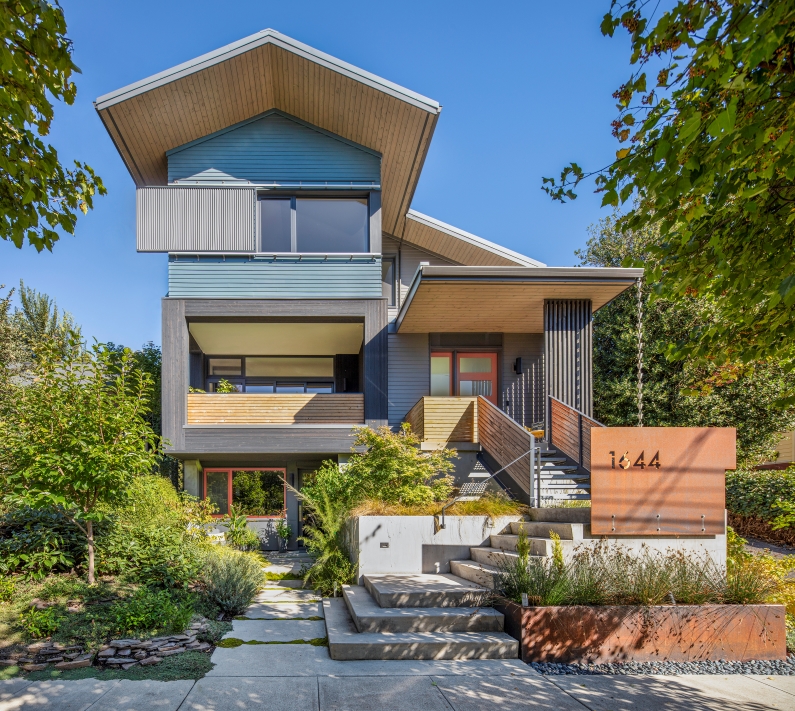
Most of building science tends to have a cold-climate bias. Although I am originally from New York, I have spent my entire professional life as a contractor and consultant in Georgia. In this mixed-humid climate (Zone 3A), the most critical issue facing builders is moisture. We experience high humidity most of the summer and periodically in spring and fall, and dry weather in the winter. Regular heavy-rain events make designing for bulk water management key. In my new home, I addressed these moisture issues with air sealing, weather barriers and flashing, HVAC design, ventilation, large roof overhangs, and site work.
The science of climate and humidity
The Atlanta area has similar total Heating Degree Days and Cooling Degree Days. We have moderate winters with few days below freezing, and long, humid, but not oppressively hot summers with few days over 90°F. The temperature differential between the interior and exterior is rarely more than 20 degrees in the summer and 40 degrees in the winter, requiring less insulation than is needed in colder climates to maintain comfort.
Humidity control, however, is a significant issue, particularly in our shoulder seasons, when we don’t need heating and cooling. Comprehensive air sealing helps manage moisture by not allowing air—and the moisture in it—to infiltrate into the house during humid weather or exfiltrate out during dry weather, helping to maintain comfortable relative humidity levels. To manage this, I designed my house for the most straightforward air sealing possible.

Designing for moisture and bulk water management
I chose a simple volume (no cantilevers or vaults) on a slab foundation; the wood-framed walls were covered with Zip System sheathing, which made for an excellent air seal with minimal effort. On the top floor, I installed Zip on top of the ceiling joists, and taped at the…
Weekly Newsletter
Get building science and energy efficiency advice, plus special offers, in your inbox.

This article is only available to GBA Prime Members
Sign up for a free trial and get instant access to this article as well as GBA’s complete library of premium articles and construction details.
Start Free TrialAlready a member? Log in








12 Comments
Great article, good to see a focus on humid climates.
Did you consider any of the "magic box" units like the CERV2? I ask only because these claim to be able to handle the dehumidification and re-temper the air to avoid the heating issue (Ok, so they have a small AC unit to do the re-cooling, so it's not a mystery, just a tune-able latent/sensible ratio). They also include ERV and distribution. And they do that while designed for small ducting that might fit in the service cavity (and the sizes reflect the smaller loads of high performance houses).
Agreed, glad to see some content for warmer, humid places.
Regarding the slab insulation, could you elaborate on your product selection and strategy regarding termites? Atlanta is in "very heavy" termite territory - it would be interesting to hear how you handled that risk. Thank you!
James - I did not look at the CERV. I stayed with technologies that I was familiar with. Perhaps it would have been a suitable option.
Nathan - I installed Term, a vapor/termite barrier that is applied to the slab before framing. It provided a complete seal between the concrete and framing. In my case the edge of the slab insulation was between the stem wall and slab which was covered with the Term.
https://polyguardproducts.com/2017/03/term-barrier-system/
I notice Carl is carefully avoiding showing photos of his very enticing carport in case we all pile over there for a party.
“[Deleted]”
Here you go Malcolm
Wow, that might be the classiest car port I've ever seen. Are those divided pane windows or just divided air space?
Charlie - no windows, just a trellis. We considered growing vines on it, but decided to leave it as it. It was kind of luck that I wasn't able to build a garage as I had already maxed out the accessory building space but carports don't count.
What is the pitch of your roof?
Roof pitch is 6/12
For readers who want to see more of the project, you can find quite a few of Carl's blogs chronicling various aspects of the build on GBA.
What insulation is used in the walls and ceilings and what r-value? What windows are installed and what is the u-value, SHGC, and VT of the windows?
Log in or become a member to post a comment.
Sign up Log in